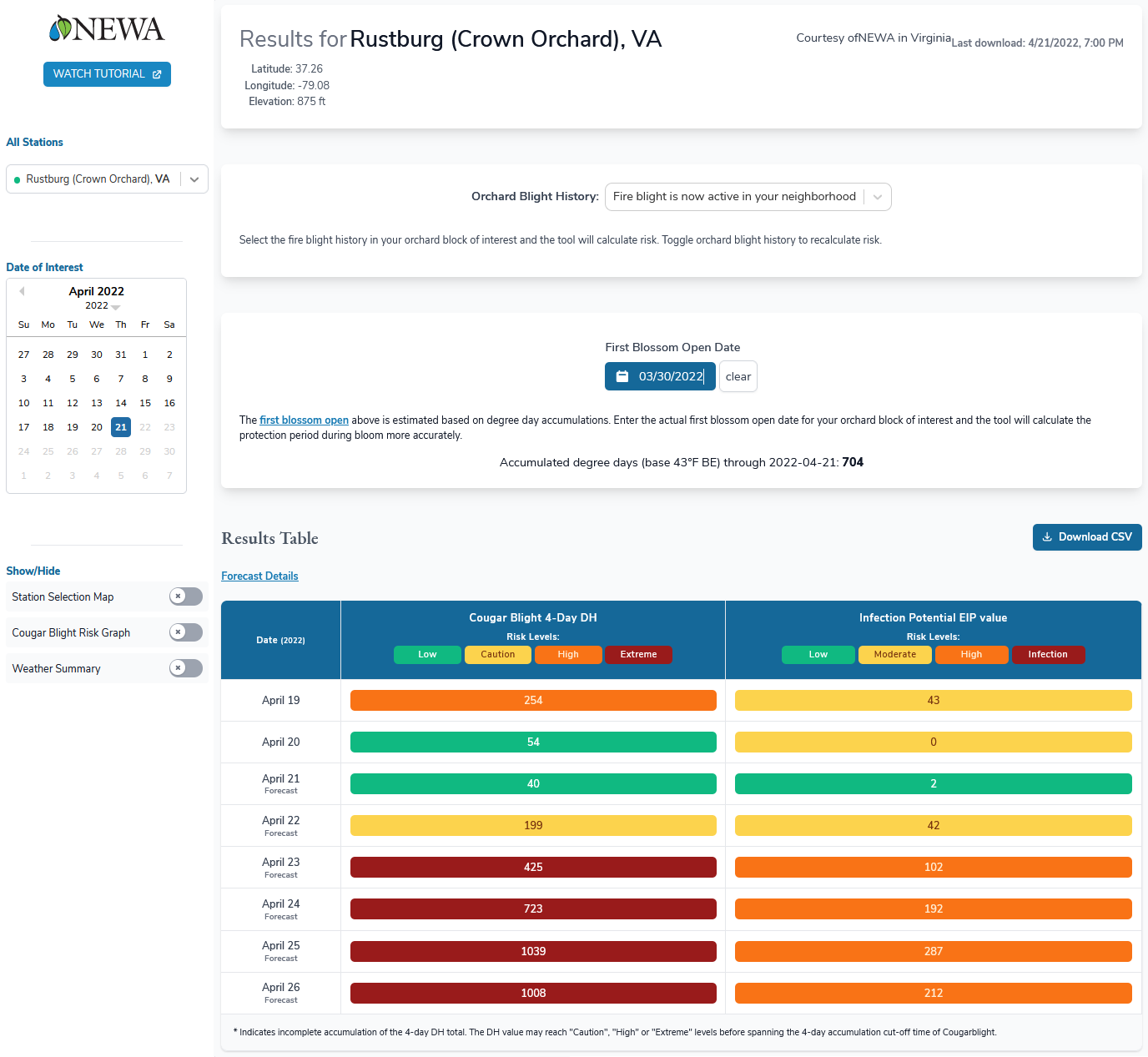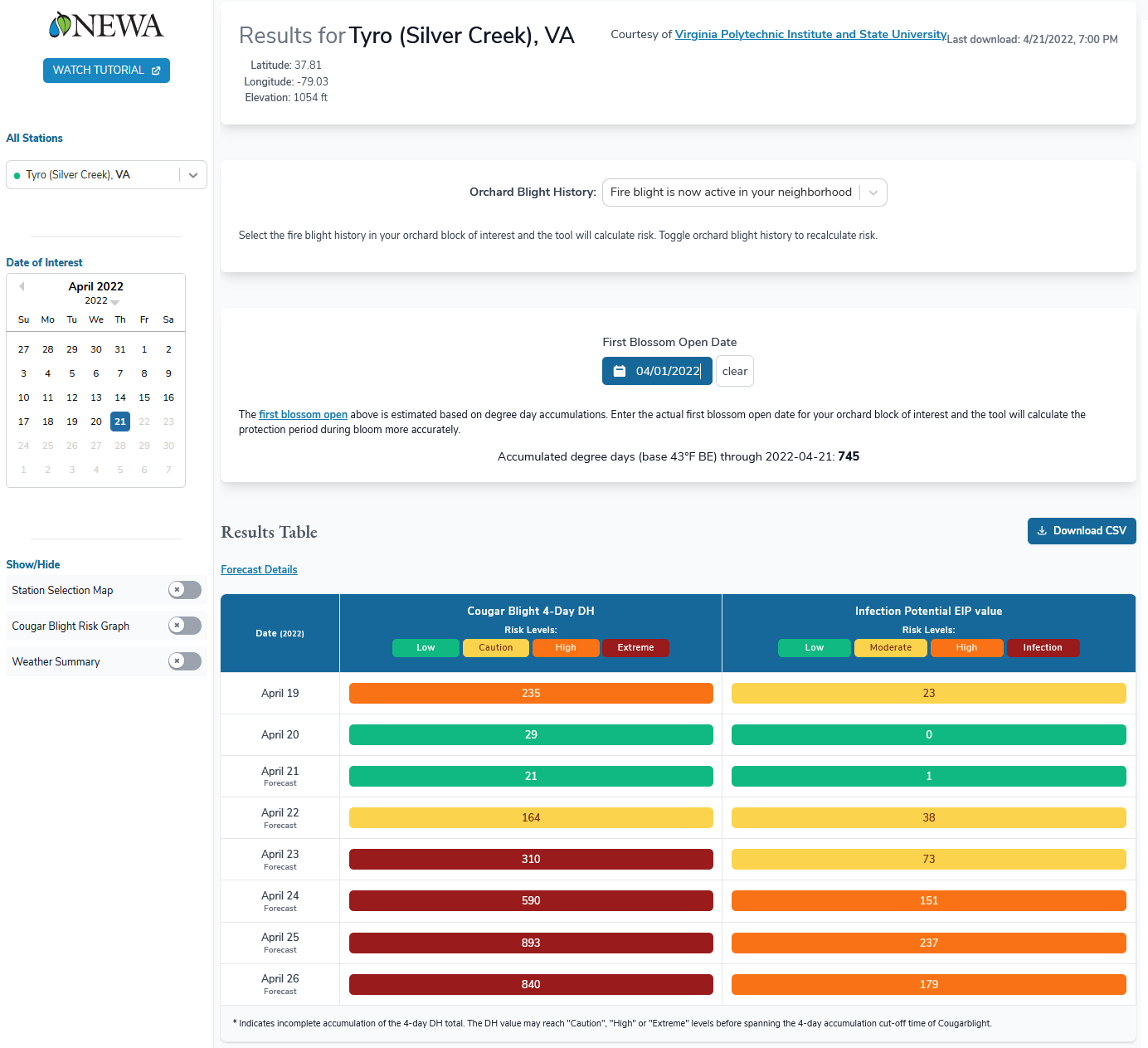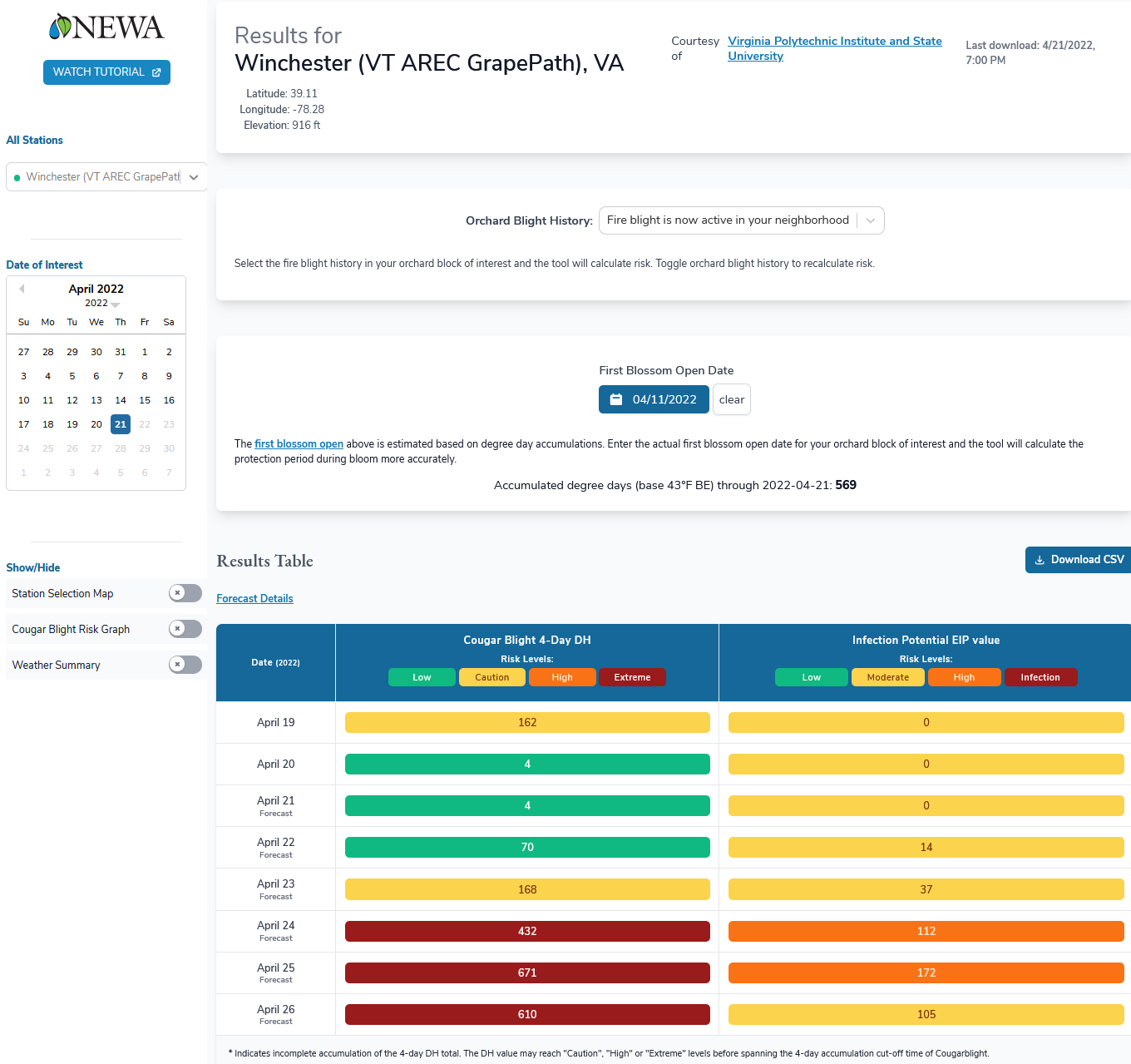Warm Weather Ahead: Predicted Favorable Conditions for Fire Blight 23-26 April, But Infections Only if Wetting Occurs
Weather forecast as of this moment is predicting warm weather ahead with average temperatures above 60F, which will ramp up the value of the EIP above 100 on 23rd or 24th April. The EIP value is the measure of the infection potential of the fire blight pathogen on flowers, simply put. Literally, it means Epiphytic Infection Potential, which is the measure of how much heat units have accumulated which directly impact growth of fire blight bacteria populations on the surface of open flowers (so Epiphytic in EIP means that fire blight bacteria multiply on the surface of the flowers). Fire blight bacteria multiply at temperatures above 65 F. Accumulated degree hours of heat above 65 F (DH65) estimate bacterial population growth on the flower surface to a dangerous level that is necessary to be exist before infection is possible. At the 198 degree hours accumulation of heat above 65 F, during the time when flowers are opening, fire blight bacteria populations have reached critically high enough numbers that could cause infection dangerous level if wetting event on flowers occurs (The EIP value results from dividing the current accumulated heat units i.e. degree hours above 65F by 195 and then multiplying this by 100). For example: EIP when 198 DH / 195 = 101. To infect flowers, the high bacterial populations on flowers require a wetting event – either rain, or heavy dew, or spray water from your tank (if you apply fungicides, insecticides, thinners) when EIP is at or above 100. The water will then wash the bacteria from the flower surface to the base of the flower where infection occurs through nectar glands. Therefore, if you are applying any spray mix to protect against rust, for example, when EIP is 100 or above, add streptomycin to your tank mix to prevent fire blight infection.
As you can see below in Figures 1-3, the NEWA EIP model outputs from this evening (4/21/2022) the forecast currently indicates that we will enter high EIP values again on 23 or 24th April, depending on location. This does not indicate infection will occur as the color of the box in which the EIP value is orange, telling us that risk is high (bacteria are at a high numbers on flowers) but one of the several factors listed below in bullets 2 – 4 is not occurring at the same time with the others:
- open(ing), i.e. young flowers
- a certain number of heat units must accumulate during bloom for a threshold level of fire blight bacterium inoculum to be reached;
- a wetting event is necessary after this point to wash the bacteria to their infection sites;
- the average temperature is above 60F.
Therefore the colors in the NEWA fire blight EIP model column to the right in Figures 1 – 3 labeled “Infection Potential EIP value” reflect the combination of the required conditions in the bullets 2 to 4 above, and yes, for infection to occur you need all conditions in bullets 2 to 4 to coincide while trees are in bloom. Therefore, the box with EIP value needs to turn into dark red color to tell you the infection will occur with a natural wetting event. Keep in mind that if you are providing water with the spray application of a fungicide, insecticide, or a thinner, you can trigger the infection but the model will not account for that as it uses natural and not human caused wetting events to give infection predictions. Here are the color codes and what they mean:




